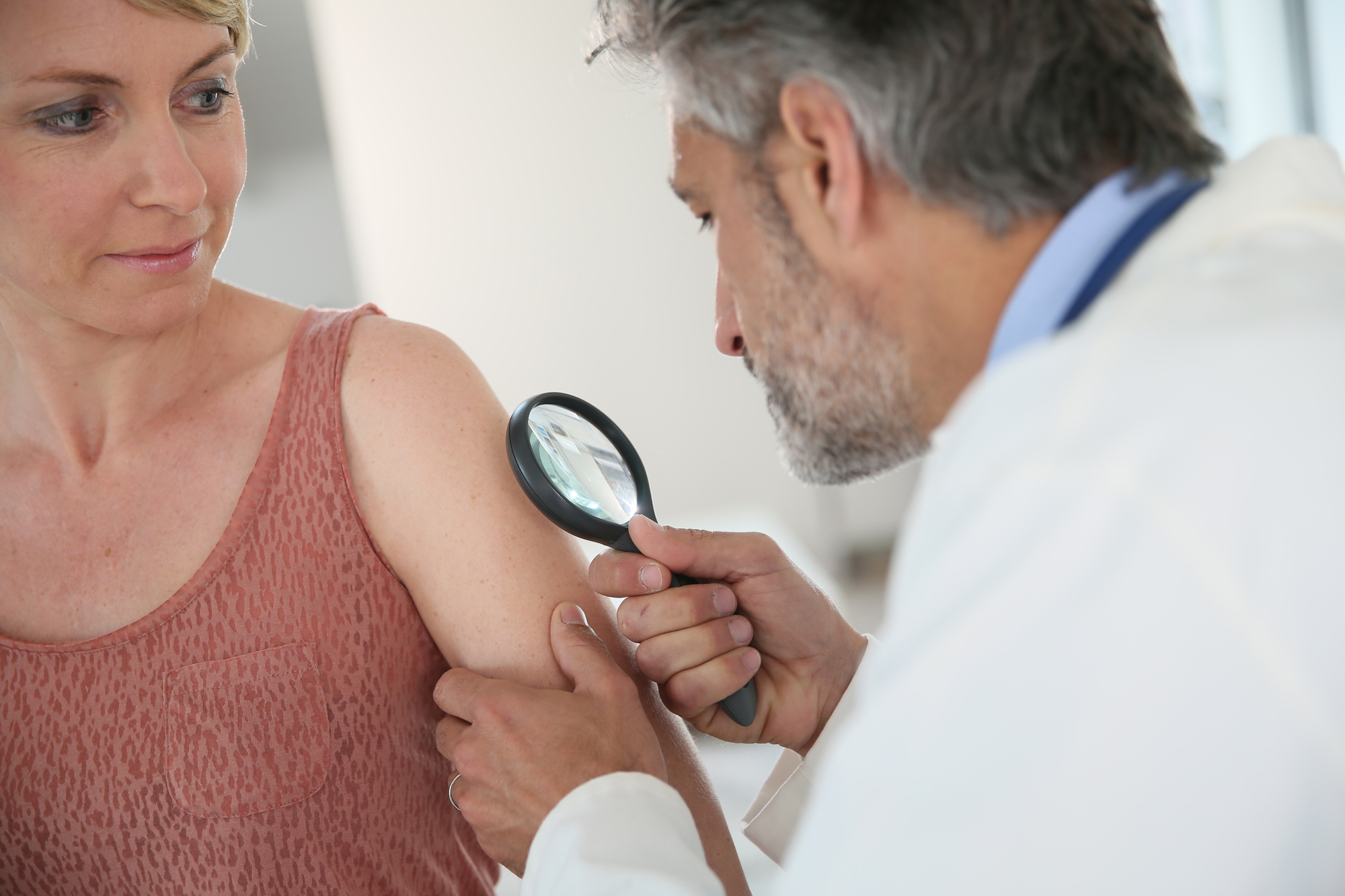What is a Blistering Disorder?
Blistering disorders of the skin are different from friction or inflammation-induced blisters. Commonly, these blisters come from one of two autoimmune disorders, pemphigoid or pemphigus, that causes a blister breakout on the skin.
Pemphigus and pemphigoid are autoimmune conditions where your body produces antibodies that attach to the layers of the skin. The antibodies attach to the epidermis or sub-epidermis and create damage in that specific area. The damage results in a blister.
If you’re experiencing an unexplained blistering rash on the skin, it may be time to consider one of these issues as the cause of your symptoms.
What Are the Symptoms of a Blistering Disorder?
There are several categories of blistering diseases, each with different symptoms.
Pemphigus Foliaceus
The most common blistering pemphigus subtype, pemphigus foliaceus (PF), indicates blisters in the most superficial layer of the epidermis. When we see this in patients, they have blisters on the surface of their skin that have already sloughed off.
These areas have a “cornflake look” with little crusty spots flaking off the top layer of skin. Patients with pemphigus foliaceus most commonly have blistering rashes on their upper back, the central part of their nose, shoulders, and behind their ears.
Pemphigus Vulgaris
Pemphigus vulgaris, another pemphigus subtype, results in blisters in a deeper layer of the skin. These blisters lie deeper in the epidermis and can produce blisters anywhere on the body, including on the mucous membrane. Blisters on the mucous membrane can affect the eyes, genitalia, or the mouth.
The appearance and symptoms of pemphigus vulgaris can range from a few blisters in one location to blistering over the entire body that looks similar to a severe burn. Extreme cases are one of the few medical emergencies that exist in dermatology. When we suspect pemphigus vulgaris, it’s important to quickly identify this disorder and begin treatment immediately.
Pemphigoid
Pemphigoid blistering disorders of the skin form below the epidermis (sub-epidermal blisters). Because of that, the blisters are more intense. Patients who experience pemphigoid are often older, typically in their 70s.
Symptoms of pemphigoid begin with a rash that soon reddens and then turns to hives. The hives and redness worsen until the rash forms into a tense blister. This most commonly appears on the thighs, trunk, or waist, but it can involve mucous membranes as well, resulting in the need for multidisciplinary care, much like pemphigus vulgaris.
What Are the Treatment Options for Blistering Disorders?
Treatment for pemphigus or pemphigoid blistering disorders is similar. Treatment begins with topical therapy and may eventually include systemic (oral or injectable) immune modulators.
Most dermatologists first approach these blistering disorders of the skin with an immediate recommendation for topical therapy. If the patient presents flaking, red, superficial blisters in the chest and shoulders, central face, or behind the ears, and we suspect pemphigus foliaceus, we’ll start treatment with topical steroids right away.
Diagnosing Pemphigus and Pemphigoid Blistering Disorders
Diagnosing pemphigus or pemphigoid is a combination of clinical assessment and biopsy. Reaching an accurate diagnosis is a fine science that begins with your doctor noticing and recognizing signs that lead to specific testing.
If your doctor suspects one of these conditions, they’ll conduct an appropriate biopsy and order a Direct Immunofluorescence (DIF) test of the biopsied tissue. This test allows a specialized pathologist to examine the tissue in a special solution that shows exactly where the blister forms within the skin. Once they pinpoint the exact location of the blister, they can determine the type and subtype of the blistering disorder.
To further confirm the diagnosis, your doctor may also order a blood test to look for circulating antibodies in your blood that reveals the type of pemphigoid or pemphigus.
Once we’re able to fully diagnose the issue, we typically prescribe oral or injectable medications to fight the autoimmune condition causing the blisters. The treatment may include systemic therapies such as immunomodulators and immunosuppressants.
Click here to find an Epiphany provider near you.

